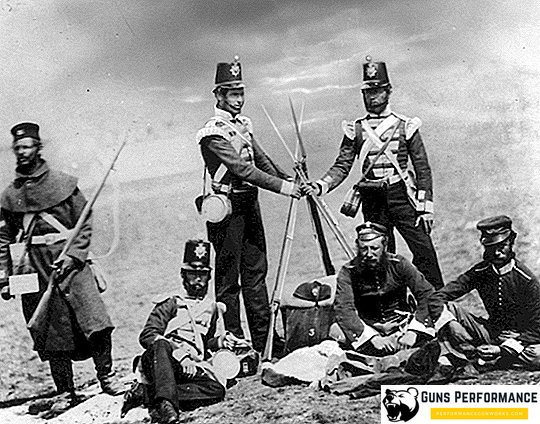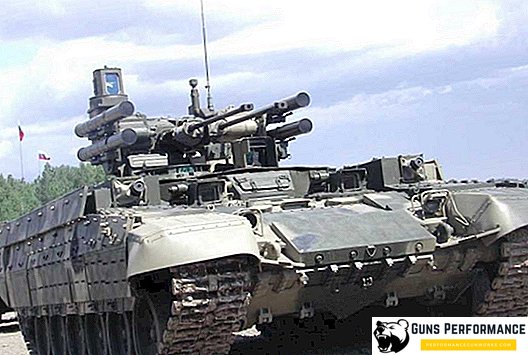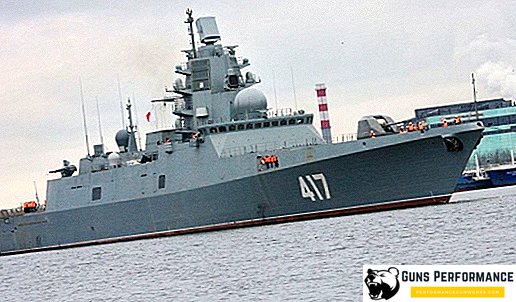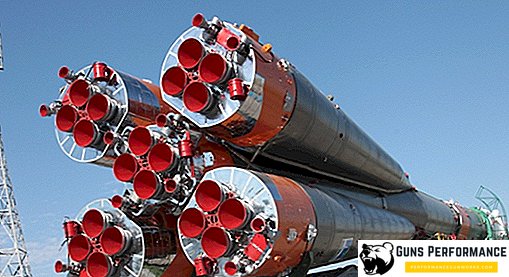Increasingly, in the news bulletins from the "hot spots" one can hear the word "special forces", by which they mean special-purpose units within the various security or law enforcement agencies. This testifies to the increased role of special operations forces of the FSB and the GRU in settling power conflicts.

To effectively achieve the goals, an appropriate form of clothing is needed, which, in addition to convenience, must protect the fighter from the harmful effects of the environment and the enemy’s weapons.
The structure of special forces from around the world
The form of the fighters of special units usually differs little from a similar one in the power department to which this unit is attached. Consider the structure of the special forces of Russia, the USA and Ukraine.

Russia
Russian special forces are represented by such units:
- Special forces special services, including the structures of the FSB, SVR and FPS FSB.
- Special forces of the armed forces (Special Operations Forces, special forces of the Airborne Forces, the Navy and the GRU).
- Special Forces of law enforcement in the structures of the Ministry of Emergency Situations, the Federal Penitentiary Service, the Interior Troops of the Ministry of Internal Affairs and the Russian Police.

Ukraine

Special Forces of Ukraine are integral parts of such security agencies:
- MIA, including internal troops.
- General Directorate of Intelligence at the Ministry of Defense of Ukraine.
- Border Service.
- Armed Forces of Ukraine, including:
- Highly mobile amphibious troops;
- Mining infantry and reconnaissance special forces of the Ground Forces;
- Training units related to the Ministry of Defense.
- Management of state security.

USA

Special Forces units in the United States have their own specifics and structure:
- Spetsnaz security agencies.
- Forces of special operations of the US Armed Forces. They, in turn, are divided into special forces:
- Air force;
- Marines;
- Military police;
- Naval forces.

Types of special forces
The classification of uniforms of law enforcement agencies is universal, regardless of whether it is the special forces of the GRU or the FSB. According to her military uniform is:
- summer;
- winter
In addition, there is a division of the form by purpose:
- The field is worn for a period of military or emergency, during hostilities, natural disasters and the elimination of their consequences, during combat duties and exercises. Field clothing special forces accompanies him in the most difficult moments of the service, so special requirements are imposed on her.
- The parade is used during the presentation of the battle flag and receiving state awards, when carrying a guard of honor, as well as during parade days and weekends. During the ascent of the naval flag on the ship and the launching of the ship, the dress uniform is also worn.
- Casual uniform is applied in all remaining cases.

Species camouflage special forces
The form of special forces is made from special fabrics that meet the requirements of safety, ergonomics and protection. The FSB special forces fighters often have to disguise themselves and become invisible to the enemy. For such cases, clothing is provided with an appropriate pattern. Each country has its own types of camouflage.

American camouflage
The most common masking fabrics for military clothing created in the United States include:
- MARPAT. The name of the fabric comes from the abbreviation of the phrase Marine Pattern. It is used, among other things, for the tailoring of uniforms of the American special forces of the Marine Corps. It combines shades of green, brown and black. Refers to the advanced "digital" colors. It has been experimentally established that this type of pattern is more effective than the usual “breaks” symmetry of a human silhouette, since it lacks obvious joints of contrasting colors, and the pattern is divided into rectangular parts. It is produced in 3 variations:
- basic;
- city
- deserted (without green).
- Woodland. The most popular camouflage comes from the United States. The name "NATO" still stuck with him, although the states that are part of this military bloc have their own individual color patterns. It was created in the 80s of the last century specifically for the army and special forces. Black, brown, dark and light green colors are used for masking in the forest. The disadvantages of this material include black shade, acquired by the fabric after wetting. A fighter in such clothes can be easily detected by the enemy. Available in 4 colors:
- base;
- mountain, in which more brown;
- moderate;
- lowland with a predominance of green shades.
- ACU PAT. Short for "army combat uniform pattern". This form is designed for the US Army and special forces that are part of them. The term covers not only coloring, but also the cut of clothes. The advantage of ACU PAT over Woodland is that the former does not turn black after wetting as a result of a lighter color spectrum, including medium, light and dark shades of gray.

Russian camouflage
The colors of the masking clothes used by the special forces of Russia and Ukraine for the special units of the GRU, the Ministry of Internal Affairs or the FSB are largely inherited from the USSR. We list the main types of drawings:
- "Amoeba". One of the oldest camouflage developed by Soviet specialists in 1935. It has various versions.
- "Deciduous forest", camouflage military fabric, which was created for the soldiers of the Great Patriotic War in 1942
- Silver Leaf, he is "sunbeams", he is "birch". A deforming pattern of such a sample was developed in the 50s of the last century in the USSR.
- HRV-93, popularly referred to as "vertical line" due to vertical stripes. Field shape, effectively breaking silhouette on a vegetable background.
- HRV-98 Flora. Nicknamed "watermelon" camouflage because of the characteristic bands. Basic camouflage for special forces of the Armed Forces of Russia. Along with the specific coloring, it has excellent masking characteristics in relation to the middle part of Russia.
- "Digital Flora", he is the "Russian figure". A new summer and winter uniform for the fighters of special units of the GRU structure, the Ministry of Internal Affairs and the FSB, the design and coloring of which was developed by the Russian fashion designer V. Yudashkin.

A new form of special forces from Yudashkin
In 2007, the Fashion House of V. Yudashkin, together with the Central Research Institute of the Clothing Industry, developed a new uniform for Russian Interior Ministry special forces from camouflage blended fabric consisting of 50% polyester and 50% cotton.
The kit includes a jacket and pants. Jacket with 2 shoulder and 2 breast pockets. There is an inside pocket. Epaulettes (one on the left shoulder and chest), if necessary, easy to put on and take off. Cuffs, shoulder straps and pockets fasten with Velcro fasteners.

Pants have 2 patch pockets on the sides and back, 2 side welt pockets. A special pocket is provided for storing a personal token. For a belt on a belt of trousers there are loops. A special knee velcro insert acts as an additional protection if a seal is inserted into it. At the bottom of the pants stitches are sewn for the convenience of putting on the berets on the legs.
Thus, with all the variety of materials, colors and designs, the field uniform of the special forces of Russia, the USA and Ukraine has a number of common features. This is the use of camouflage to camouflage from the enemy and the presence of a large number of pockets, scenes and clips for maximum functionality.












